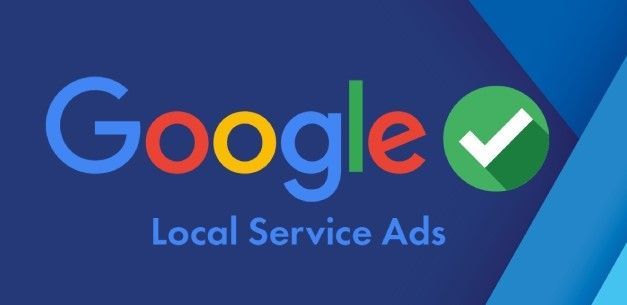7 Tips to Master Local SEO for Pest Control Companies
In today's digital landscape, local SEO (Search Engine Optimization) is crucial for pest control companies to succeed in attracting local customers. Local SEO strategies focus on optimizing a website's visibility in local search results, ensuring that potential customers can find and engage with the business easily. This article presents a comprehensive 7-step process to help pest control companies master local SEO and enhance their online presence.
Step 1: Understand Your Target Market
Understanding the target market for pest control businesses is crucial for effectively reaching and serving potential customers. Here are some key aspects to consider when understanding the target market for pest control businesses:
- Geographic Scope: Identify the specific geographic areas where your pest control business operates or plans to expand. Understand the local demographics, population density, and prevalence of pest-related issues in those areas. This information will help you tailor your services and marketing efforts to address the needs of customers in those specific locations.
- Residential and Commercial Segments: Determine the balance between residential and commercial customers in your target market. Assess the size and characteristics of each segment, as their pest control needs and requirements may differ. For example, residential customers might require services for their homes, while commercial customers may need pest control solutions for offices, restaurants, hotels, or other types of businesses.
- Pest Types and Common Issues: Research the common pest types and prevalent pest-related issues in your target market. Different regions may experience distinct pest challenges due to varying climates, local ecosystems, and building structures. Understanding these specific pest issues will enable you to offer tailored solutions and position your business as an expert in addressing those particular problems.
- Customer Preferences and Concerns: Identify the preferences, concerns, and priorities of your target market. Some customers might prioritize environmentally friendly or organic pest control methods, while others may be more concerned about the speed and efficiency of the service. By understanding these preferences, you can adapt your service offerings and marketing messages to align with what your target customers value most.
- Competitive Landscape: Research the existing competition in your target market. Identify other pest control businesses operating in the area and analyze their strengths, weaknesses, and unique selling propositions. This knowledge will help you differentiate your services and develop strategies to stand out from the competition.
- Consumer Behavior and Decision-Making Process: Gain insights into the behavior and decision-making process of your target market. Understand how potential customers search for pest control services, the information they seek, and the factors that influence their decision to choose a particular provider. This knowledge will enable you to optimize your marketing efforts, website, and online presence to effectively reach and convert potential customers.
By thoroughly understanding your target market for pest control businesses, you can tailor your services, marketing strategies, and customer experiences to meet the specific needs and preferences of your potential customers. This will enhance your ability to attract and retain customers, differentiate your business, and drive long-term success.
Step 2: Conduct Local Keyword Research
Conducting local keyword research is essential for optimizing your online presence and attracting local customers to your pest control business. Here are the steps to effectively conduct local keyword research:
- Understand Your Target Location: Start by identifying the specific location or locations you want to target. This could be a city, town, or specific neighborhood. Understanding the local geography will help you tailor your keyword research to the area you want to focus on.
- Identify Seed Keywords: Begin by brainstorming a list of seed keywords related to pest control services. These could include terms such as "pest control," "extermination," "termite treatment," or "rodent removal." These keywords serve as the foundation for your research.
- Use Keyword Research Tools: Utilize keyword research tools to expand your list of keywords and gather data on their search volume, competition, and relevance. Tools like Google Keyword Planner, SEMrush, or Moz Keyword Explorer can provide valuable insights.
- Localize Your Keywords: Incorporate location-specific modifiers into your keywords to make them locally relevant. For example, if you're targeting Los Angeles, you could modify a keyword like "pest control" to "pest control Los Angeles" or "Los Angeles extermination services." This helps you capture local search intent.
- Analyze Competitor Keywords: Study the websites and online presence of your local competitors. Identify the keywords they are targeting and ranking for in local search results. This can provide valuable insights and help you discover keyword opportunities you may have missed.
- Consider Long-Tail Keywords: Long-tail keywords are longer and more specific search phrases that can be highly targeted. These keywords often have lower competition and can attract customers who are ready to take action. For example, "emergency pest control services in [city name]" or "affordable termite exterminators near me."
- Incorporate Searcher Intent: Consider the intent behind the keywords people are using in their searches. Are they looking for information, seeking immediate assistance, or comparing services? Tailor your keywords to match the searcher's intent to improve your chances of attracting the right audience.
- Analyze Search Volume and Competition: Evaluate the search volume and competition level for your selected keywords. Aim for keywords with a reasonable search volume that aligns with your business goals, and consider targeting keywords with lower competition to increase your chances of ranking higher in search results.
- Refine and Prioritize Keywords: Review your list of keywords and prioritize them based on relevance, search volume, and competition. Focus on keywords that have a balance between search volume and competition and align closely with your target audience's needs and location.
- Monitor and Update: Keyword research is an ongoing process. Continuously monitor your keyword performance, track changes in search behavior, and update your keyword strategy accordingly to stay ahead of evolving trends and search patterns.
By conducting thorough local keyword research, you can optimize your website, content, and online presence to target the right audience and increase your visibility in local search results. This will help drive targeted traffic to your pest control business and generate qualified leads from your local area.
Step 3: Optimize Your Website
Optimizing your website is crucial for improving its visibility in search engine results and providing a better user experience for your visitors. Here are some key steps to optimize your website:
- Keyword Optimization: Incorporate relevant keywords throughout your website, including in page titles, headings, meta descriptions, URL structures, and within the content itself. This helps search engines understand the focus of your website and improves its chances of ranking for relevant search queries.
- High-Quality Content: Create informative, engaging, and original content that caters to the needs and interests of your target audience. Ensure that your content is well-written, provides value, and includes relevant keywords naturally. Regularly update your content to keep it fresh and relevant.
- Page Load Speed: Optimize your website's performance by minimizing file sizes, leveraging browser caching, and optimizing images. A fast-loading website provides a better user experience and can positively impact your search engine rankings.
- Mobile-Friendly Design: Ensure that your website is mobile-friendly and responsive, meaning it adapts to different screen sizes and devices. With the increasing use of mobile devices, a mobile-friendly website is essential for reaching and engaging with your audience.
- Clear Navigation and Site Structure: Design a clear and intuitive navigation menu that makes it easy for visitors to find the information they need. Organize your website into logical sections and use descriptive URLs to help both users and search engines understand the structure of your site.
- Metadata Optimization: Craft compelling and concise meta titles and descriptions for each page of your website. These elements appear in search engine results and can significantly impact click-through rates. Include relevant keywords while providing an accurate and enticing description of the page's content.
- Internal and External Linking: Use internal links to connect related pages within your website, helping visitors navigate and explore your content. Additionally, seek opportunities for external links from reputable and relevant websites, as this can improve your website's authority and visibility in search results.
- Image Optimization: Optimize images by compressing their file sizes without compromising quality. Use descriptive file names and include alt text to provide context and improve accessibility. Optimized images enhance your website's loading speed and can appear in image search results.
- Social Media Integration: Incorporate social media buttons and sharing options on your website to encourage visitors to engage with your content and share it on their social networks. This can help increase your website's visibility and attract more traffic.
- Analytics and Monitoring: Implement website analytics tools, such as Google Analytics, to track and analyze your website's performance. Monitor metrics like traffic, bounce rate, conversion rates, and keyword rankings to gain insights and make data-driven improvements.
Remember, website optimization is an ongoing process. Regularly monitor and analyze your website's performance, adapt to changes in search engine algorithms, and continue refining and updating your optimization strategies to ensure long-term success.
Step 4: Claim and Optimize Your Google My Business Listing
Claiming and optimizing your Google My Business (GMB) listing is crucial for boosting online visibility and attracting local customers. Here's how to do it:
- Claim your listing: Visit google.com/business, sign in with your Google account, and follow the prompts to claim your listing.
- Provide accurate business information: Fill in all required details accurately, including business name, address, phone number, website URL, and operating hours. Ensure consistency with your website and other platforms.
- Choose relevant categories: Select appropriate categories that describe your pest control business, helping Google display your listing to users searching for relevant keywords in your area.
- Craft a compelling business description: Create a concise description highlighting your unique selling points and services, using relevant keywords naturally.
- Upload high-quality photos: Include high-quality images of your business, showcasing extermination equipment, staff, or before-and-after shots to leave a positive impression.
- Encourage positive reviews: Motivate satisfied customers to leave reviews, which build trust. Respond professionally to reviews, showing your commitment to customer feedback.
- Enable messaging and Q&A: Allow potential customers to communicate through messaging. Respond to questions in the Q&A section to engage with users.
- Utilize Google Posts: Share updates, special offers, and events through eye-catching images and compelling copy. Include clear calls-to-action to drive traffic to your website.
- Monitor insights and analytics: Regularly review the Insights section to understand user behavior. Analyze search queries, customer actions, and photo views for data-driven improvements.
- Keep information up to date: Ensure your listing is always current. Update business details, hours of operation, and service changes promptly. Respond to new reviews and maintain a fresh and relevant listing.
By optimizing your GMB listing, you can improve local search visibility, attract more customers, and enhance your online presence in the pest control industry.
Step 5: Build Local Citations and Backlinks
Building local citations and backlinks is essential for enhancing your pest control business's online visibility and authority. Here's how:
Local Citations:
- List your business on reputable local directories like Yelp, Yellow Pages, and Angie's List, ensuring consistent business name, address, and phone number (NAP).
- Submit your business information to citation aggregators such as Infogroup, Acxiom, and Localeze for broader distribution.
- Seek listings on industry-specific directories and local chamber of commerce websites.
- Maintain accurate and consistent NAP information across all citations.
Backlinks:
- Cultivate relationships with local organizations and request backlinks from their websites.
- Offer guest blog posts or articles to local publications, including a link to your website.
- Engage in local events, sponsor community initiatives, or donate to local charities to potentially earn backlinks.
- Collaborate with local influencers or bloggers who can feature your business and link back to your website.
- Create valuable, high-quality content on your website to attract backlinks from industry peers and local community members.
Monitor and Manage:
- Regularly monitor existing citations and backlinks, promptly updating or correcting any inaccuracies.
- Utilize online tools to track backlinks and identify opportunities for new citations.
- Respond to negative reviews or feedback on citation websites to showcase your dedication to customer satisfaction.
Building local citations and backlinks strengthens your pest control business's credibility, visibility, and local search rankings, driving targeted traffic to your website and increasing the likelihood of attracting local customers.
Step 6: Create Localized Content
Creating localized content is a powerful strategy to enhance your website's visibility in local search results. By developing blog posts, articles, or videos that specifically address pest control issues in your area, you can establish yourself as a reliable source of information for local customers. Offer valuable insights, tips, and guidance to address their unique needs. Naturally incorporate local keywords into your content to improve its relevance and optimize it for local search queries. By providing localized content, you not only attract more local visitors to your website but also position yourself as a trusted resource within your community.
Step 7: Engage with the Local Community
Engaging with the local community is an essential aspect of building a strong brand reputation, fostering customer loyalty, and boosting your local SEO efforts. By actively participating in local events, sponsoring local organizations, and collaborating with other businesses in your area, you can reap numerous benefits that contribute to your overall online presence. Here's how community engagement plays a crucial role in enhancing your brand and local SEO:
- Increased Brand Visibility: By participating in local events, you have the opportunity to showcase your brand to a wider audience. Whether it's setting up a booth, sponsoring an event, or providing educational materials, your presence creates visibility and awareness among local residents and potential customers. This increased exposure can lead to greater brand recognition and recall when people search for pest control services in your area.
- Valuable Partnerships: Collaborating with local organizations, businesses, and community groups can result in valuable partnerships. These partnerships can involve joint marketing initiatives, cross-promotion, or co-hosting events, allowing you to tap into their customer base and reach new audiences. Additionally, forming alliances with complementary businesses, such as garden centers or property management companies, can create referral opportunities and strengthen your position within the local market.
- Online Mentions and Backlinks: Engaging with the local community can also generate online mentions and backlinks, which are valuable for your local SEO efforts. When you actively participate in local events or sponsor organizations, they may mention or link to your business on their websites, social media platforms, or newsletters. These online references not only drive referral traffic but also signal to search engines that your business is relevant and trustworthy, positively impacting your search engine rankings.
- Positive Online Reviews and Testimonials: Active involvement in the local community often leads to positive interactions and experiences with customers. This can translate into more online reviews and testimonials, which play a significant role in local SEO. Positive reviews not only influence the decision-making process of potential customers but also contribute to your business's overall reputation and credibility in the eyes of search engines.
- Local Citations and Online Directories: Engaging with the local community increases the likelihood of your business being mentioned in local citations and online directories. These citations and listings include your business name, address, phone number, and website, which help search engines understand your business's relevance to a specific location. Consistent and accurate citations across different platforms can positively impact your local SEO performance.
By actively engaging with the local community, you create a positive brand image, expand your reach, and generate opportunities for online mentions, backlinks, and positive reviews. These factors collectively contribute to improving your local SEO efforts, boosting your visibility in local searches, and ultimately attracting more local customers to your pest control business.
Mastering local SEO is crucial for pest control companies to stand out in local search results and attract local customers. By following this 7-step process, you can optimize your website, claim your Google My Business listing, and create targeted content to improve your local search rankings. Remember to monitor your progress regularly, adapt your strategies based on results, and stay up to date with evolving SEO trends to maintain a competitive edge in the digital landscape.
Start mastering local SEO for your pest control company today and reap the benefits of increased online visibility and local customer engagement.
Pest Control Marketing Tips
All Rights Reserved -Digital Containment LLC






